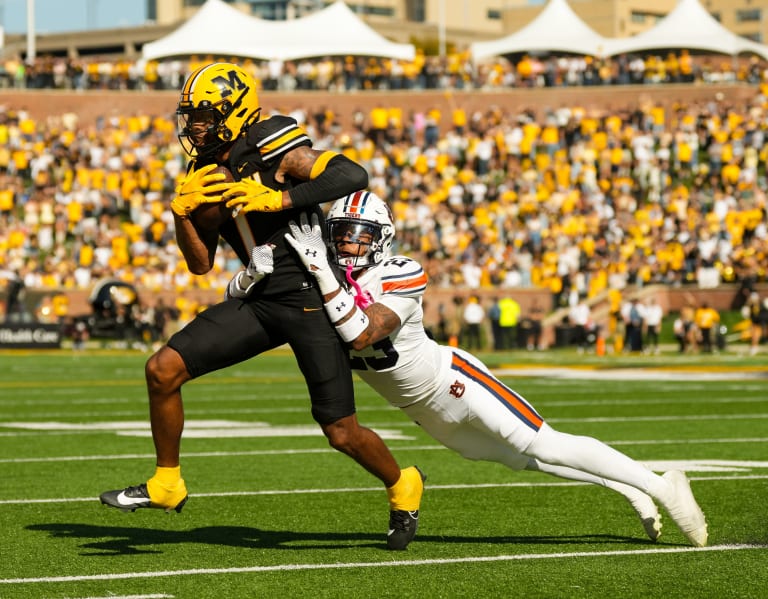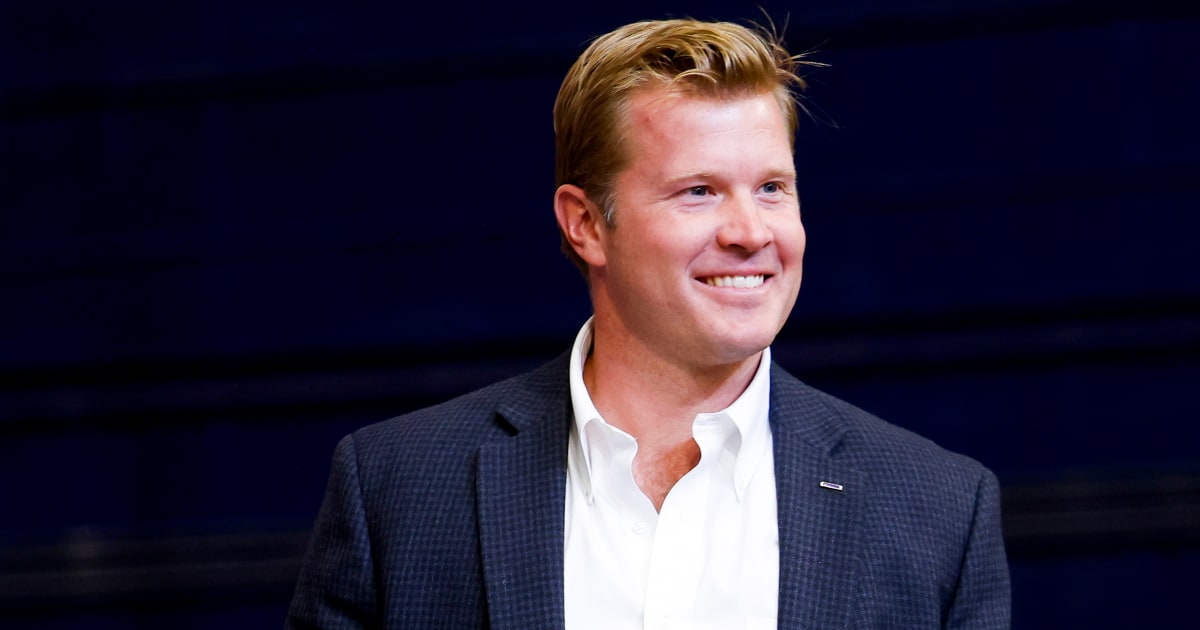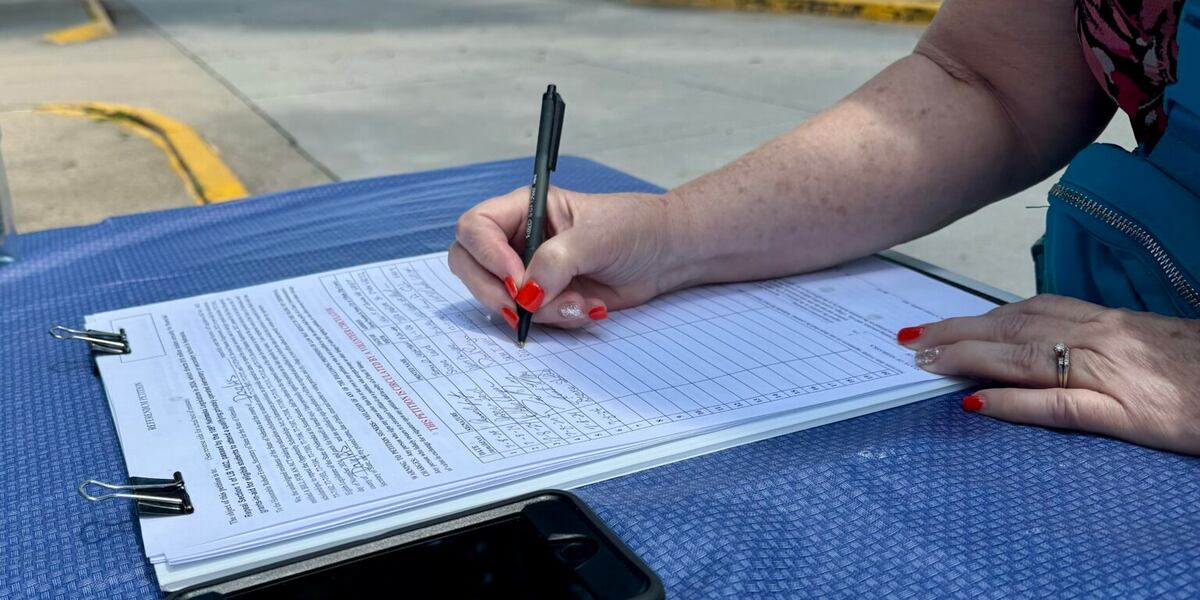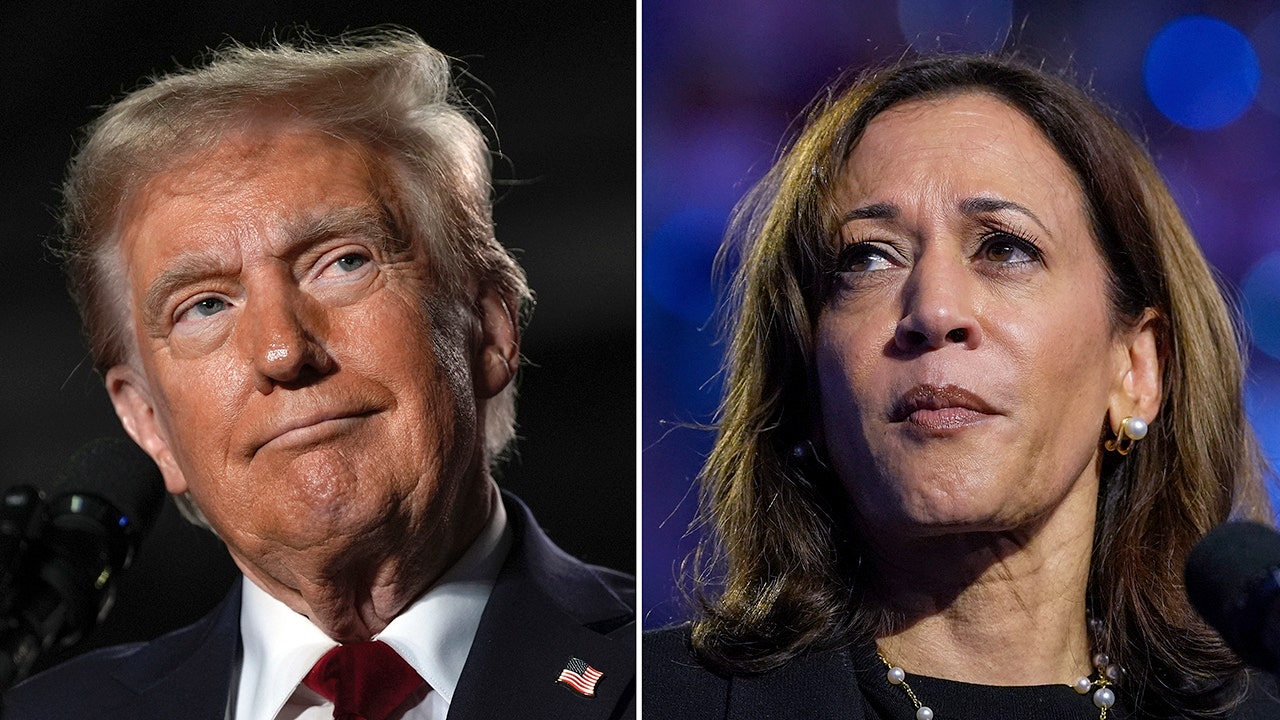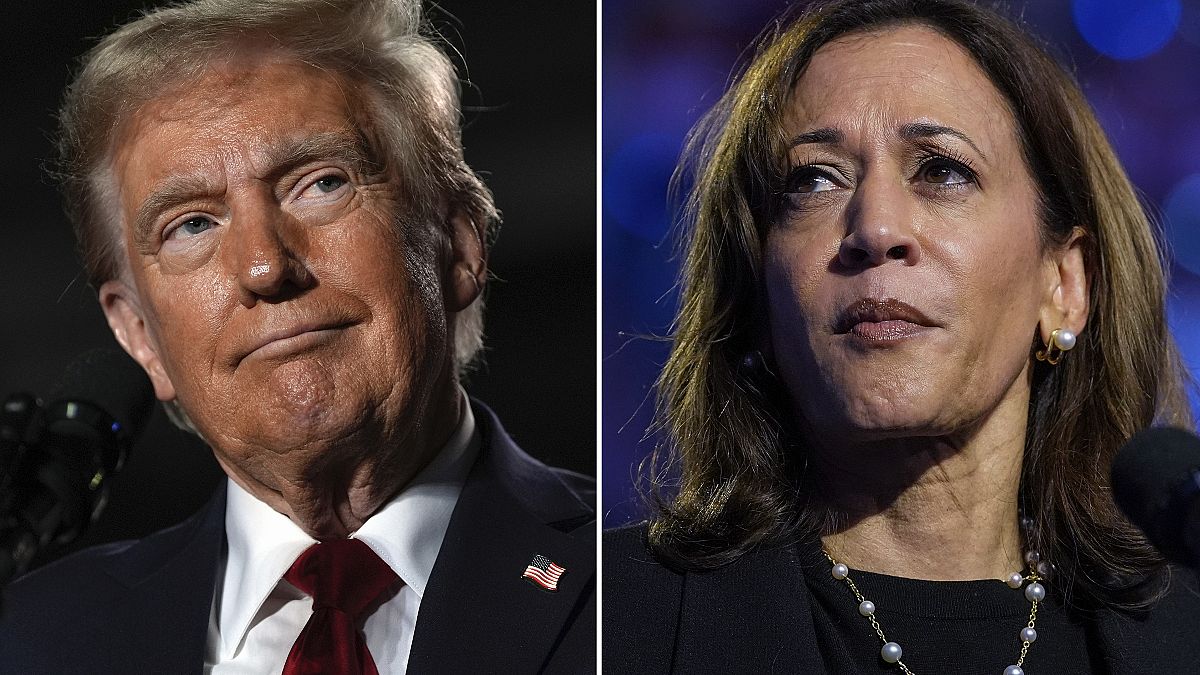Since the New Deal era, the bulk of the functioning US government is the administrative state — think the acronym soup of agencies like the EPA, FCC, FTC, FDA, and so on. Even when Capitol Hill is not mired in deep dysfunction, the speed at which Congress and the courts operate no longer seems suitable for modern life. Both industry and ordinary people look to the administrative state, rather than legislators, for an immediate answer to their problems. And since 1984, the administrative state largely ran on one Supreme Court precedent: Chevron USA, Inc. v. Natural Resources Defense Council (NRDC).
Technology
What SCOTUS just did to net neutrality, the right to repair, the environment, and more
/cdn.vox-cdn.com/uploads/chorus_asset/file/25301215/STK463_SCOTUS_B.jpg)
That decision has now been overturned. Admin law is not always interesting, but the simple fact is when it comes to the day-to-day, agencies are the most impactful part of the federal government. No single policy writer at The Verge can fully articulate the impact of Friday’s Supreme Court decision and how profound its effects will be. The administrative state touches everything around us: net neutrality, climate change, clean air and water, and what scant consumer protections we have.
The true scope of this ruling will not be immediately felt, and what replaces Chevron deference is still unclear. The regulatory state has been under steady attack from an increasingly conservative judiciary for a long time. Some of the agencies we follow most closely were kneecapped even before this decision — one expert we talked to said that Chevron had been a “dead letter for quite some time.”
Still, this is a formal turning point. The biggest policy stories at The Verge have centered around federal agencies. And for a long time, the kind of regulation that actually kept up with the pace of technology was mostly coming out of agencies. It is in the years to come that we will wonder, “Why isn’t anyone doing anything?” or “How can a court just unilaterally do that?” about issues that range from trivial to life-threatening.
We’ll look back on this moment as a pivotal part of how we got there.
What is Chevron deference?
It is a longstanding doctrine in which courts defer to federal agencies when there are disputes over how to interpret ambiguous language in legislation passed by Congress. The underlying reasoning is that subject matter experts within the agency are probably able to make more informed decisions than a judge recently assigned to the case. Chevron deference is strong deference — and the low bar for deferring to agencies means that regulations tend not to get tied up in court.
“The key point of Chevron was that laws like these are policy decisions, and those policy decisions should be made by the political branches responsive to the voters, Congress and the president, not by unaccountable judges with no constituents,” David Doniger, an attorney and senior advisor to the NRDC Action Fund, said in a press briefing earlier this month. Doniger happened to litigate and lose the case that gave Chevron deference its name.
While the practice had been in place for decades before, it came to be known as Chevron deference after a 1984 case: Chevron v. NRDC. The Supreme Court ruled in favor of Chevron, allowing the Ronald Reagan administration’s industry-friendly Environmental Protection Agency to stick with a lax interpretation of the Clean Air Act.
Over the years, Chevron deference has enabled federal agencies to tackle all sorts of issues that legislators have yet to cover — from addressing greenhouse gas emissions causing climate change to regulating broadband access. As the conservative legal movement to disempower the administrative state grew, Chevron deference became — in certain circles — shorthand for government overreach.
Before its decision to overturn Chevron, the Supreme Court had already dealt a blow to federal agencies’ regulatory authority by strengthening the “major questions” doctrine in its 2022 decision in West Virginia v. EPA. According to the major questions doctrine, a federal agency shouldn’t have the leeway to craft regulation on an issue of major national significance if Congress hasn’t explicitly allowed it to do so in legislation.
When two cases calling for an end to Chevron deference worked their way up to SCOTUS, the writing was on the wall
The same bloc of six conservative justices that formed the majority in West Virginia v. EPA also overturned the longstanding precedent of Roe v. Wade — an even older case than Chevron — in the same month. When two cases calling for an end to Chevron deference worked their way up to the Supreme Court this year, the writing was on the wall — and once again, those same six justices overturned Chevron.
Loper Bright Enterprises v. Raimondo and Relentless, Inc. v. Department of Commerce were factually about an agency rule on fishing boats, but everyone more or less knew that Chevron was on the line. The cases garnered support from a broad swath of industry interests, including Gun Owners of America and e-cigarette companies.
Legal commentator Matt Ford wrote earlier this year that this interplay between the judiciary and industry was hardly an open secret, quoting Don McGahn — who would eventually become Trump’s White House counsel — at CPAC 2018 saying outright that “the judicial selection and the deregulatory effort are really the flip side of the same coin.”
It’s not yet certain what has replaced Chevron, though some of the wording in the decision suggests we may fall back on a doctrine known as Skidmore deference — a weaker deference, meaning that judges have more power to block agency rules. “The idea that Skidmore is going to be a backup once you get rid of Chevron, that Skidmore means anything other than nothing, Skidmore has always meant nothing,” Justice Elena Kagan said during oral arguments in January.
The new threat to net neutrality
The Federal Communications Commission has famously interpreted Title II of the Communications Act to regulate internet service providers as common carriers in a policy known as net neutrality. Reclassifying ISPs as telecommunications services, rather than information services, would let the FCC impose more regulations on the industry, including mandating that they can’t unfairly block or throttle internet traffic. The idea is to keep ISPs from controlling what information users do or don’t see on the internet. In its latest move to restore the rules, the FCC said reclassifying ISPs as common carriers would also give the agency more oversight over internet outages and help it better secure internet infrastructure.
That interpretation could come under threat, even as the FCC just recently voted to reinstate net neutrality after it was repealed during the Trump administration. “Overruling Chevron has the potential to change the tenor of the impending judicial challenge to the new net neutrality rules dramatically,” University of Pennsylvania Carey Law School professor Christopher Yoo wrote in an article published prior to the Supreme Court ruling. That’s in part because prior judicial review relevant to net neutrality has taken Chevron deference into consideration.
For example, even when the FCC previously chose to classify ISPs in a way that would lead to lighter-touch regulation, the Supreme Court ruled in National Cable & Telecommunications Association v. Brand X Internet Services that Chevron deference should be applied to the FCC’s interpretation of the Communications Act. “Brand X’s conclusion that the statute at issue is ambiguous made it highly likely that reviewing courts applying Chevron would uphold the net neutrality rules under review regardless of whether they were regulatory or deregulatory,” Yoo wrote.
The downfall of Chevron deference could completely change the ways courts review net neutrality, according to Bloomberg Intelligence’s Matt Schettenhelm. “The FCC’s 2024 effort to reinstitute federal broadband regulation is the latest chapter in a long-running regulatory saga, yet we think the demise of deference will change its course in a fundamental way,” he wrote in a recent report. “This time, we don’t expect the FCC to prevail in court as it did in 2016.” Schettenhelm estimated an 80 percent chance of the FCC’s newest net neutrality order being blocked or overturned in the absence of Chevron deference.
There’s still some hope at the appeals level that the FCC could successfully argue that its interpretation of its authority to regulate broadband is the best way to read the law. But Schettenhelm told The Verge it will be a “tough sell” to a conservative and business-friendly Supreme Court, which could make the final call on net neutrality.
After the opinion came out, the Information Technology and Innovation Foundation (ITIF), a think tank that receives funding from ISPs including AT&T, Comcast, and Verizon, cheered the decision and said it makes it “even less likely that the FCC’s recent regulatory overreaches on Digital Discrimination and Title II for the Internet will survive judicial review.” ITIF said the FCC’s November 2023 digital discrimination order — which allows the agency to fine telecom companies when they fail to provide equal connectivity to different groups without a good reason — could also be in danger. “Now, the Commission will no longer have the refuge of statutory ambiguity to shield this overreach from judicial scrutiny,” ITIF director of broadband and spectrum policy Joe Kane said in a statement.
What will happen to the environment and efforts to fight climate change
“It’s no coincidence that Chevron itself was an environmental case … especially for an agency like the Environmental Protection Agency that makes these highly technical, highly scientifically based decisions under very, very complicated statutes. Chevron was very important,” Lisa Heinzerling, a professor of law at the Georgetown University Law Center, said in a call with The Verge prior to today’s opinion.
Overruling Chevron is essentially a big power grab, experts tell The Verge. It pushes the agency’s technical experts to the side when it comes to crafting environmental protections. In recent years, the conservative-leaning Supreme Court had already whittled down the agency’s regulatory authority — notably, by strengthening the major questions doctrine that Heinzerling describes as “the anti-Chevron.”
As a result, the EPA has already pivoted away from relying on Chevron deference, according to NRDC Action Fund’s Doniger. A rule the EPA finalized in April for cutting greenhouse gas emissions from power plants is a prime example. The Supreme Court decision in West Virginia v. EPA not only strengthened the major questions doctrine, it also said that the EPA’s rules shouldn’t determine whether utilities use fossil fuels or renewable energy. That effectively pushed the EPA to turn to controversial technologies that capture carbon dioxide from power plants in its policy to cut greenhouse gas emissions.
The EPA wrote the rule in a way that anticipated the fall of Chevron so that it can withstand legal challenges, Doniger said in a call with The Verge. But even with the EPA’s preemptively defensive crouch, its power plant rule “is incredibly legally vulnerable” to a rollback of Chevron deference, former Trump administration EPA administrator Andrew Wheeler said in a May episode of the Politico Energy podcast.
“The overall pattern here is clear — it’s not just in this decision — the court majority is on a rampage designed to make it harder for the government to protect us,” Doniger said.
What happens to the push to regulate Big Tech
Federal Trade Commission Chair Lina Khan has made no secret of her ambitions to use the agency’s authority to take bold action to restore competition to digital markets and protect consumers. But with Chevron being overturned amid a broader movement undermining agency authority without clear direction from Congress, Schettenhelm said, “it’s about the worst possible time for the FTC to be claiming novel rulemaking power to address unfair competition issues in a way that it never has before.”
Khan’s methods have drawn intense criticism from the business community, most recently with the agency’s labor-friendly rulemaking banning noncompete agreements in employment contracts. That action relies on the FTC’s interpretation of its authority to allow it to take action in this area — the kind of thing that brings up questions about agency deference.
But the FTC has already had to contend with trends cutting away at agency deference for quite some time. For example, the noncompete rulemaking is already facing scrutiny under the Major Questions Doctrine, which is cited in the US Chamber of Commerce’s challenge. It’s a principle that’s shown up in Supreme Court cases that basically says Congress must grant clear authority for questions of great political or economic significance. The chamber argues in its lawsuit to block the FTC noncompete rule that the Supreme Court has invoked the Major Questions Doctrine “to reject similar attempts by administrative agencies to take unprecedented actions with vast economic and political significance based on nothing more than ambiguous and ancillary statutory text—particularly where the agency has never before pointed to that text as a font of regulatory power.”
“The Supreme Court has taken most of the wind out of the sails of Chevron with the Major Questions Doctrine, in the sense that when an agency enters into a regulatory area that it hasn’t been in before, the Supreme Court has created a strong presumption the agency does not have the authority to regulate,” said Jack Beermann, an administrative law expert and professor at Boston University School of Law. “And so Chevron doesn’t enter into the picture in cases like that.”
David Vladeck, a professor at Georgetown Law who led the FTC Bureau of Consumer Protection from 2009 to 2012, said that “courts started to back off of Chevron” during the Obama administration, decreasing the utility of citing it as a defense. “As a result, lawyers like myself who were representing agencies would not rely on Chevron, and generally wouldn’t cite it because it wasn’t going to change the balance of the case. But it may signal that you need this deference in order to prevail.” Because of that, the overruling of Chevron could have a more muted impact on an agency like the FTC because “by and large, Chevron has been a dead letter for quite some time,” Vladeck said.
Still, there are some areas where it could come into play or exacerbate existing trends. For example, Khan has sought to enforce Section 5 of the FTC Act, governing “unfair methods of competition,” more expansively than in the past. It’s often cited in antitrust cases alongside other federal statutes like the Sherman Act. But in 2022, the FTC released a policy statement saying it could bring enforcement matters under Section 5 on a standalone basis and that authority under the statute goes beyond that of the other federal antitrust laws. Under Chevron, “the agency could rely on deference to their interpretation in order to say what constitutes an unfair method of competition,” said Ryan Quillian, a partner at Covington who served as deputy director of the FTC’s Technology Enforcement Division from 2020 to 2022. But with Friday’s decision, Quillian said, that effort “could be in jeopardy.”
Tech workers on visas and immigration law
With regards to immigration, Chevron deference has given the Department of Homeland Security and its component agencies broad latitude. For example, under Chevron, decisions made by US Citizenship and Immigration Services (USCIS) — the federal agency that, among other things, issues non-immigrant, work-based visas like H-1Bs — were more difficult to challenge because of the requirement that courts defer to federal agencies. Tech companies rely heavily on H-1B workers. Nine of the 10 companies that filed the most H-1B petitions during the 2022 fiscal year —including Amazon, Google, and Meta — were in the tech sector, according to federal data analyzed by the Economic Policy Institute.
“In the past, employers have had a hard time overturning narrow interpretations of H-1B issues because of Chevron deference,” Stephen Yale-Loehr, a professor of immigration law practice at Cornell Law School, told The Verge. “Now, however, people who feel that the agency is too stingy in its interpretation of various visa categories may be more likely to seek court review.”
The desire to seek court review, however, will likely depend on an applicant’s location. Jonathan Wasden, a former government attorney whose firm, Wasden Banias, specializes in visa cases, said the overturning of Chevron will likely create a patchwork system. “I was hoping for them to create a framework, but right now it’s really in the eye of the particular judge that’s reviewing your case — which is great if you’re a litigant and an agency is acting silly, but for the government, it’s going to be a big problem,” Wasden told The Verge. “You’re looking at 96 federal courts with all different views of how the statute is supposed to work.”
Going forward, instead of relying on a single framework across the country, USCIS will likely pay more attention to where an applicant is located to determine how statutes will apply to them. “For an agency that already is challenged, it’s going to be tough, because they’re just not that nimble,” Wasden said.
In other words, the amount of recourse available to a person whose H-1B petition is denied by USCIS will depend largely on their location. predicts that the biggest challenge for the government will be in “as applied” cases, or those that argue that the application of a particular statute or policy — and not the statute or policy itself — is unconstitutional. “There’s going to be a lot of individual litigants with compelling facts across the country on the exact same issue, and we’re going to see a variety of ways to resolve and interpret the law in those cases,” Wasden said.
The effects of this patchwork system will not be felt immediately, nor will they be felt evenly. “A lot needs to be worked out,” said Yale-Loehr, “and it will be confusing and complicated for several years.“
Labor and workers’ rights
The overturning of Chevron may make it easier to challenge policies implemented by labor agencies going forward, including efforts to enact workplace safety regulations. The Biden administration has implemented a number of regulations related to workplace safety and worker treatment. This year alone, the Department of Labor extended overtime pay to workers making below $58,656, announced a regulation allowing third parties on worksite inspections, and the Equal Employment Opportunity Commission issued new guidance on workplace harassment for the first time since 1999. The regulation raising the salary threshold for overtime pay, slated to go into effect on July 1st, faces multiple legal challenges from industry groups.
In an email to The Verge, Charlotte Garden, a professor of labor law at the University of Minnesota, said the decision to overturn Chevron will likely be “disruptive for workers’ rights.”
“The DOL’s long-standing approach to whether an employee is ‘exempt’ from overtime under the ‘white-collar’ exemption involves looking at both the amount of the employee’s salary, and their duties — so employees are entitled to overtime pay unless they earn more than the salary threshold and perform qualifying duties,” Garden said. Business groups have argued that the DOL “isn’t allowed to set a salary threshold at all” — an argument Garden said is more likely to win now that Chevron is overturned.
“Under Chevron, if a judge thought the [Fair Labor Standards Act] was ambiguous, it would then defer to the DOL’s reasonable interpretation of that statute,” Garden said. “But now, judges are free to decide what they think the best reading is.” As is the case with immigration, different judges will reach different decisions about how to interpret regulations, which could lead to different regulatory schemes across the country.
Under Biden, the Occupational Safety and Health Administration (OSHA) has been working on heat stress regulations intended to protect workers from increasingly high temperatures on the job — a proposal that has already faced pushback.
“It’s much harder for an agency to take big swings when it’s regulatory authority when it’s not going to get a layup when it goes into defendant,” Alexander MacDonald, a shareholder at Littler’s Workplace Policy Institute, told The Verge.
Michael Rubin, a partner with the public interest firm Altshuler Berzon, said the success of these challenges remains to be seen. “They still have to go through the same procedures for challenging it: a challenge goes to court, and it simply means that the courts will take a de novo — fresh look — at the statute,” said Rubin, whose firm has represented gig worker drivers and Apple employees who recently filed a gender discrimination lawsuit against the company. More consequential, Rubin adds, is the fact that the Supreme Court is divided on how to construe statutes and constitutional provisions. “There’s likely to be far more litigation, without the benefit of Chevron deference, resulting in greater uncertainties, greater delays, and more inefficient practices throughout the country,” Rubin said. “It’s going to put an enormous burden on Congress and the courts, as well as the agencies, and it will certainly take months — if not years — to determine the actual impact.”
The right to repair, copyright, patent law, and the Apple Watch ban
Intellectual property issues will probably see the least impact and almost certainly the lowest body count, but the fact that Chevron deference is applicable to any of these issues at all may be illustrative of the sheer scope of the administrative state.
In 2015, an appeals court applied Chevron to the US International Trade Commission. The ITC does many things, but you likely last heard about it in 2023 when it ruled that the Apple Watch infringed on patents for pulse oximetry, resulting in a temporary ban for imports of the Apple Watch. “I do think the demise of Chevron will affect patent law, though I agree most folks will have bigger fish to fry,” Mark Lemley, a professor at Stanford Law School, wrote in an email to The Verge. “The ITC would presumably not be entitled to deference in its interpretation of patent law.”
In 2017, an appeals court — controversially — applied Chevron to the Patent and Trademark Office’s interpretation of patent law. “The PTO makes few substantive rules,” Rebecca Tushnet, a professor at Harvard Law School, wrote in an email. The less agency rulemaking, the less impact overturning Chevron will have.
But there is one notable part of intellectual property law where agency rulemaking matters quite a lot and happens in bulk: every three years, the Copyright Office issues exemptions for DMCA Section 1201. These cover the right to repair, unlocking cellphones, ripping DVDs for archival or educational purposes, taking apart electronic voting machines to test for security issues, and more. The Copyright Office falls under the legislative branch, rather than the executive, where admin law traditionally applies. But earlier in June, an appeals court ruled these DMCA rulemakings were subject to the Administrative Procedure Act, the 1946 statute from which Chevron, Loper Bright, and the entire administrative state stems. These DMCA rulemakings are already contentious, even when enclosed in the usually boring notice-and-comment process — but the combination of this ruling and the death of Chevron may have the recurring triennial conflict sprawling into the courts as well.
To be clear, none of these are necessarily bad outcomes — and as Lemley notes, most people “have bigger fish to fry.” No one is going to think, Well, on the one hand climate change will kill us all, but on the other hand, I have my Apple Watch.
Beyond that, the disempowering of federal agencies means the empowerment of another entity — and in this case, it is the increasingly conservative judiciary. Article III courts do not always make the best decisions, even when it comes to relatively apolitical issues like software copyright. This shift in the balance of power will touch on issues both big and small, dire and inane in the years to come.

Technology
Amazon’s Echo Spot alarm clock is on sale with a free color smart bulb
/cdn.vox-cdn.com/uploads/chorus_asset/file/25538361/247196_Echo_Spot_Review_8A0A1511_CVirginia.jpg)
The clocks have fallen back an hour for many of us, and if it all feels a bit disorienting, you’re not alone. Thankfully, Amazon’s versatile Echo Spot is on sale to help you adjust. Normally $79.99, right now you can buy the smart alarm clock at Amazon in black, blue, or white with a free Globe Electric smart bulb for $49.99, which equates to $41.99 in savings. That’s just $5 shy of the all-time low we saw during Amazon’s recent Prime Day event.
Amazon’s speedy smart speaker can be set up so that it gently wakes you up with music instead of typical alarm clock sounds, which can be jarring. The Spot is also a lot more useful than your run-of-the-mill clock, as it offers a customizable 2.83-inch screen that displays helpful info (including the weather and music playback). However, unlike Amazon’s larger smart displays, the latest Spot doesn’t push on-screen ads and lacks a camera, so there’s less of a privacy concern.
What makes the Spot particularly useful, though, is that it functions as an inexpensive Alexa speaker. That means you can use it to perform all kinds of tasks, from setting reminders to playing podcasts, audiobooks, and music. You can also use it to control other smart home devices with just your voice, including lights and smart thermostats. That’ll come in handy as the days get colder and darker — after all, no one wants to leave the warmth of their bed just to hit the lights.
Technology
Updated Android malware can hijack calls you make to your bank

Do you remember those TV shows where the villain gets defeated in one season but comes back even stronger in the next? Think “Stranger Things” on Netflix. The malware we’re talking about here is just like that. It’s called FakeCalls, and every time researchers figure out how it infects devices, it evolves with new ways to hide.
Earlier this year, it was reported to be impersonating large financial institutions, and now security researchers have discovered that the malware has gone through another upgrade. It can even hijack the calls you make to your bank using your Android phone.
ENTER CYBERGUY’S $500 HOLIDAY GIFT CARD SWEEPSTAKES
Man surfing on his Android phone (Kurt “CyberGuy” Knutsson)
What you need to know
FakeCalls is a banking trojan that focuses on voice phishing, where victims are deceived through fraudulent calls impersonating banks and are asked to share sensitive information. Earlier versions did this by prompting users to call the bank from within an app that impersonated the financial institution, as reported by Bleeping Computer. However, the latest version, analyzed by Zimperium, sets itself as the default call handler.
The default call handler app manages incoming and outgoing calls, allowing users to answer, reject or initiate calls. Giving these permissions to a malicious app, as you can imagine, carries serious risks.
When a user gives the app permission to set itself as the default call handler, the malware gets the green light to intercept and mess with both outgoing and incoming calls. It even shows a fake call interface that looks just like the real Android dialer, complete with trusted contact info and names. This level of deception makes it really tough for victims to see what’s happening.
“When the compromised individual attempts to contact their financial institution, the malware redirects the call to a fraudulent number controlled by the attacker,” explains the new Zimperium report. “The malicious app will deceive the user, displaying a convincing fake UI that appears to be the legitimate Android’s call interface showing the real bank’s phone number.”
“The victim will be unaware of the manipulation, as the malware’s fake UI will mimic the actual banking experience, allowing the attacker to extract sensitive information or gain unauthorized access to the victim’s financial accounts,” the report added.
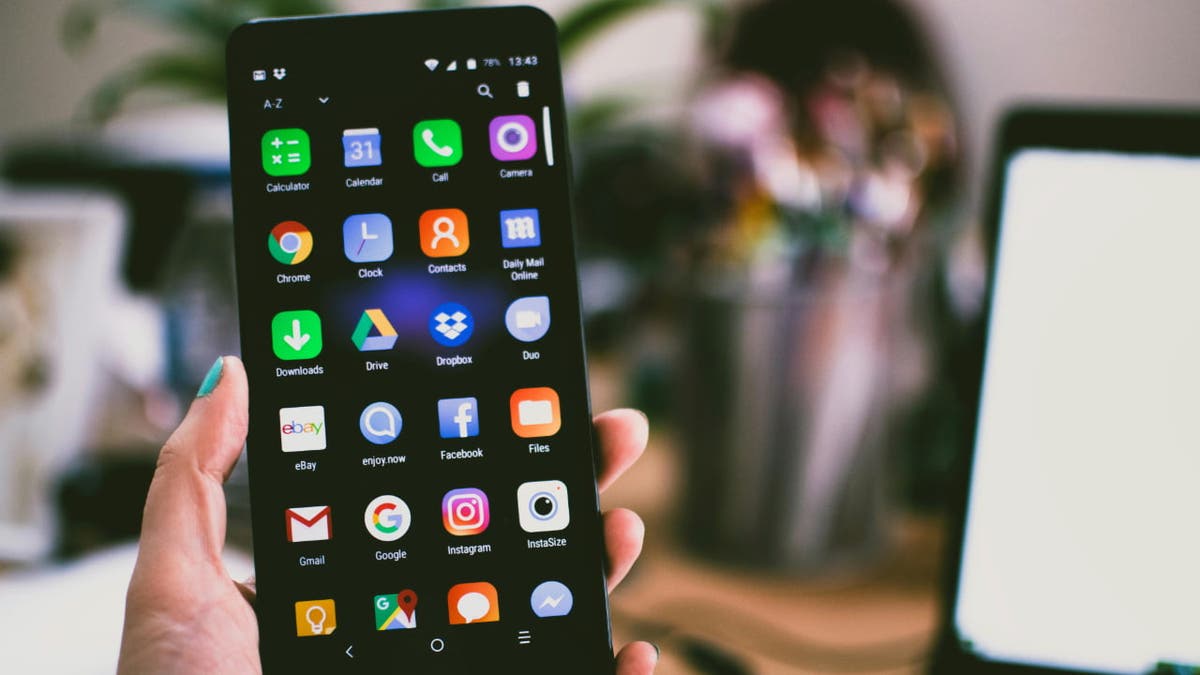
Android home screen (Kurt “CyberGuy” Knutsson)
ANDROID BANKING TROJAN EVOLVES TO EVADE DETECTION AND STRIKE GLOBALLY
The malware can also steal your data
This malware not only hijacks your calls but can also steal your data. It gets access to Android’s Accessibility permissions, which basically gives it free rein to do whatever it wants. The developer of the malware has also added several new commands, including the ability to start livestreaming the device’s screen, take screenshots, unlock the device if it’s locked and temporarily turn off auto-lock. It can also use accessibility features to mimic pressing the home button, delete images specified by the command server, and access, compress and upload photos and thumbnails from storage, especially from the DCIM folder.

Android phone (Kurt “CyberGuy” Knutsson)
ANDROID BANKING TROJAN MASQUERADES AS GOOGLE PLAY TO STEAL YOUR DATA
6 ways to protect yourself from FakeCalls malware
1) Have strong antivirus software: Android has its own built-in malware protection called Play Protect, but the FakeCalls malware proves it’s not enough. Historically, Play Protect hasn’t been 100% foolproof at removing all known malware from Android phones. Also, avoid clicking on any links in messages or emails that seem suspicious. The best way to protect yourself from clicking malicious links that install malware that may get access to your private information is to have antivirus protection installed on all your devices. This can also alert you of any phishing emails or ransomware scams.
Get my picks for the best 2024 antivirus protection winners for your Windows, Mac, Android and iOS devices.
2) Download apps from reliable sources: It’s important to download apps only from trusted sources, like the Google Play Store. The FakeCalls malware infects your phone when you download an app from an unknown link. As an Android user, you should only download apps from the Play Store, which has strict checks to prevent malware and other harmful software. Avoid downloading apps from unknown websites or unofficial stores, as they pose a higher risk to your personal data and device. Also, never trust download links that you receive through SMS.
3) Be cautious with app permissions: Always review the permissions requested by apps before installation. If an app requests access to features that seem unnecessary for its function, it could be a sign of malicious intent. Do not give any app Accessibility permissions unless you really need to. Avoid granting permissions that could compromise your personal data.
4) Regularly update your device’s operating system and apps: Keeping your software up to date is crucial, as updates often include security patches for newly discovered vulnerabilities that could be exploited by malware like FakeCalls.
5) Monitor financial activity regularly: Check your bank and credit card statements often for unauthorized transactions. Set up alerts for any account activity, which can notify you immediately if suspicious activity occurs.
6) Limit sensitive transactions on mobile: Whenever possible, avoid performing high-risk transactions (like large money transfers) on your mobile device, especially if you’re in public or connected to unsecured Wi-Fi. Use a secure computer or contact your bank directly from a verified number.
THE HIDDEN COSTS OF FREE APPS: YOUR PERSONAL INFORMATION
Kurt’s key takeaway
Hackers are constantly upgrading their tactics and finding clever ways to hack your devices and scam you out of your hard-earned money. I really think Android phone manufacturers and Google need to step up their game on security to help keep users from getting hacked so often. I don’t see the same level of malware affecting iPhones.
How comfortable are you using your mobile phone for financial transactions, and what would make you feel safer? Let us know by writing us at Cyberguy.com/Contact.
For more of my tech tips and security alerts, subscribe to my free CyberGuy Report Newsletter by heading to Cyberguy.com/Newsletter.
Ask Kurt a question or let us know what stories you’d like us to cover. Follow Kurt on his social channels:
Answers to the most asked CyberGuy questions:
New from Kurt:
Copyright 2024 CyberGuy.com. All rights reserved.
Technology
Your favorite musician’s favorite TikTok show
/cdn.vox-cdn.com/uploads/chorus_asset/file/25710447/VST_1103_Site.jpg)
Guess the artist, win five bucks. Whether you’re a random person on the streets of New York, an A-list celebrity, or the sitting Vice President of the United States, that’s the pitch behind one of the most fun music shows on social media. You show up, you get some headphones and a microphone, and you hope you know what song is playing.
The show is called Track Star, and it’s hosted by Jack Coyne. On this episode of The Vergecast, the first in our three-part miniseries about the future of music, Coyne joins the show to tell us the story of Track Star.
We talk about the show’s beginnings as a trivia show about New York called Public Opinion, how Coyne and his co-creators figured out the show’s structure and pace, how he thinks about his role as the host, and why a bunch of famous people started clamoring to be on the show. Coyne never expected Track Star to feature the likes of Ed Sheeran, Olivia Rodrigo, Jack Antonoff, Nelly Furtado, Kamala Harris, and Oprah, but it happened. And somewhat remarkably, it didn’t change the show at all.
We also dig into why a show like Track Star works, and why it matters, in the current music landscape. Coyne and his team have big plans for expanding the franchise, too, and sees a place for Track Star even in an online world already overloaded with stuff to listen to. If you start with music, conversation, and a decent playlist, there are plenty of places you can go.
If you want to know more about everything we discuss in this episode, here are some links to get you started:
-

 Sports1 week ago
Sports1 week agoFreddie Freeman's walk-off grand slam gives Dodgers Game 1 World Series win vs. Yankees
-
News1 week ago
Sikh separatist, targeted once for assassination, says India still trying to kill him
-

 Culture1 week ago
Culture1 week agoFreddie Freeman wallops his way into World Series history with walk-off slam that’ll float forever
-

 Technology1 week ago
Technology1 week agoWhen a Facebook friend request turns into a hacker’s trap
-
Business3 days ago
Carol Lombardini, studio negotiator during Hollywood strikes, to step down
-

 Health4 days ago
Health4 days agoJust Walking Can Help You Lose Weight: Try These Simple Fat-Burning Tips!
-
Business2 days ago
Hall of Fame won't get Freddie Freeman's grand slam ball, but Dodgers donate World Series memorabilia
-

 Business7 days ago
Business7 days agoWill Newsom's expanded tax credit program save California's film industry?
